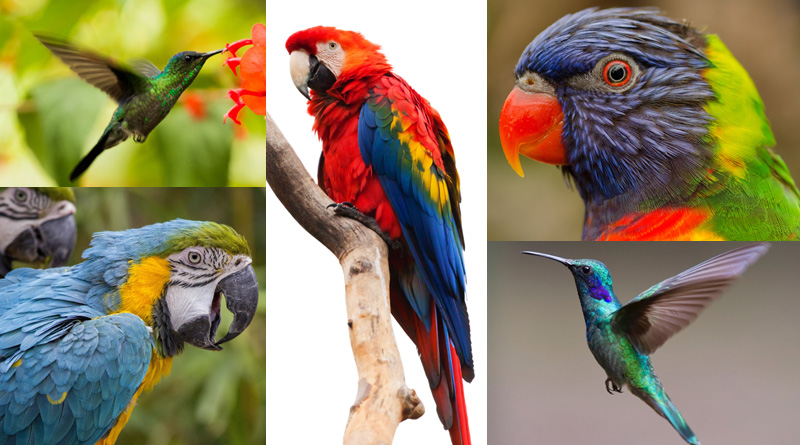COMPLEXITIES OF AMAZON BIRD TRADE
If you asked most people which nation exported the most Amazon parrot species in the past 20 years, I’m sure the majority would answer with the name of a South American country—perhaps, Peru, Ecuador, Colombia or Brazil. But the rather surprising answer is South Africa.
South Africa? That’s not even in the right continent? How can this be? The reasons for this surprising finding are examined in: Bird’s-eye view: Lessons from 50 years of bird trade regulation & conservation in Amazon countries.
Written by Bernardo Ortiz-von Halle, funded by WWF US and published by the non-governmental organisation TRAFFIC, which specialises in studying wildlife trade, it documents an historical study of the dynamics of the bird trade in the Amazon countries of Brazil, Colombia, Peru, Ecuador, Guyana, and Suriname.
Ortiz-von Halle’s study paints a picture of high levels of exploitation of the region’s birdlife, particularly in the early years of the twentieth century when countless millions of birds were trapped for export. In a brief period before World War I, one London merchant imported 400,000 hummingbirds and 360,000 other birds from Brazil, while in 1932, some 25,000 hummingbirds were hunted in Pará State and sent to Italy to adorn chocolate boxes. After commercial airlines became operational in the region from the mid-1950s, hundreds of thousands of live birds were exported as pets from across South America.
The high levels of exploitation inevitably led to severe declines in some species—in particular some of the large and attractive macaws, such as Lear’s, Hyacinth and Spix’s Macaws. Unsurprisingly, to stop the loss of natural heritage many governments in the region chose to impose blanket bans on exports.
In 1967, Brazil became the first country in South America legally to ban the commercial sale of wild animals, replacing demand through captive breeding programmes as an economic alternative with low conservation impacts on wild populations. But with Brazil’s national wildlife trade ban installed, illegal wildlife trade was simultaneously initiated in South America.
In the 1980s, up to 10,000 Hyacinth Macaws were captured, many of them laundered through countries where trade was still legal – ending up in captive breeding facilities where production costs were lower than in Brazil. And with populations of Hyacinth Macaws seriously depleted in their native range, conservationists have had to embark on ambitious yet highly successful programmes to restore the species in the wild in Brazil.
The rather perverse outcome of trade bans has been some Amazon countries have “abandoned the possibility of legally and competitively producing and exporting their wildlife,” says the study.
Bird breeders outside the region were quick to realise the market opportunity: between 2000 and 2013 just over half of all South American parrot exports—some 334,442 individuals—were reported as captive-bred outside South American borders. And the top exporter was South Africa, with some 144,088 birds.
Today, an increasingly important economic incentive for conservation of birds in the region of the Amazon is through the promotion of birdwatching tourism. Quite literally, tourists travelling to watch, marvel at and photograph the birds that live there. In 2019 Colombia held its fifth annual bird fair: an event to celebrate the rich and vibrant birdlife of the world’s richest country for birds—and one that attracts ever more visitors to marvel at the remarkable avian diversity. And it’s big business: thousands of avid birdwatchers will travel to remote corners of the world in their quest to see the unusual.
But what of the bird trade in Amazon countries today? Three countries—Peru, Guyana and Suriname—continue to export wild-caught birds, and in some numbers. Between 2000 and 2016, Guyana legally exported some 145,000 birds whose international trade is regulated: the most exported species being the Orange-winged Amazon. In Guyana, it is estimated around 20,000 people, some 5% of the country’s rural population, benefit from this economic activity.
And while trade bans elsewhere have resulted in a disappearance of birds for sale on the streets of many countries, much of the trade has gone underground. Peru, both as recipient and source of wild bird species from and to its neighbours, is the biggest regional challenge, although Brazil continues to have a serious problem with internal trade of songbirds, despite stringent law enforcement efforts. An average of 30,000–35,000 birds are confiscated each year, a number that has not significantly varied in the last 15 years. Many of these birds are destined for “songbird competitions”, where spectators bet money on the outcomes of how many songs or phrases a bird will sing in a set time period. The activity is also popular and legal in Guyana and Suriname, and with expatriate communities living in the USA, Canada and Europe: regular seizures of songbirds, particularly seedeaters, take place in these countries as a result.
Nevertheless, the study finds that illegal international trade in live South American birds has been reduced to its lowest level in decades, although noting this is “mainly because the bird species most highly sought-after by collectors already exist in most consumer countries.”
Indeed, the study finds that “Brazil has produced the opposite situation of a market monopoly: it has unintentionally placed the right to benefit commercially from the trade in its native species in the hands of any other country that chooses to profit from them.” Today, the Philippines has become the world’s main exporter of Hyacinth Macaws.
ABOUT THE AUTHOR
Dr Richard Thomas is Global Communications Coordinator at TRAFFIC, a leading non-governmental organisation working globally on trade in wild animals and plants in the context of both biodiversity conservation and sustainable development whose mission is to ensure that trade in wild plants and animals is not a threat to the conservation of nature. More information at traffic.org

